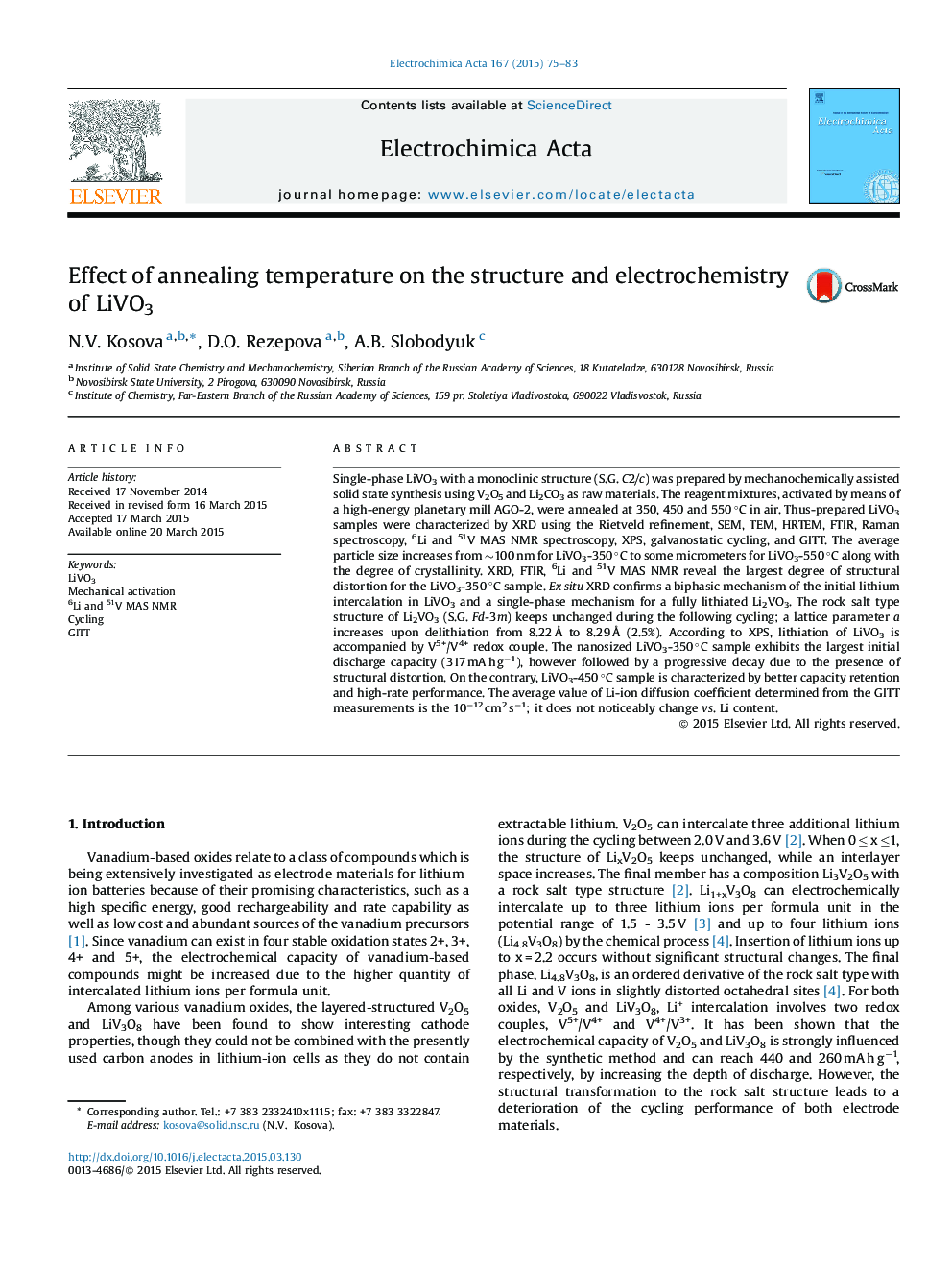| Article ID | Journal | Published Year | Pages | File Type |
|---|---|---|---|---|
| 184327 | Electrochimica Acta | 2015 | 9 Pages |
Single-phase LiVO3 with a monoclinic structure (S.G. C2/c) was prepared by mechanochemically assisted solid state synthesis using V2O5 and Li2CO3 as raw materials. The reagent mixtures, activated by means of a high-energy planetary mill AGO-2, were annealed at 350, 450 and 550 °C in air. Thus-prepared LiVO3 samples were characterized by XRD using the Rietveld refinement, SEM, TEM, HRTEM, FTIR, Raman spectroscopy, 6Li and 51V MAS NMR spectroscopy, XPS, galvanostatic cycling, and GITT. The average particle size increases from ∼100 nm for LiVO3-350 °C to some micrometers for LiVO3-550 °C along with the degree of crystallinity. XRD, FTIR, 6Li and 51V MAS NMR reveal the largest degree of structural distortion for the LiVO3-350 °C sample. Ex situ XRD confirms a biphasic mechanism of the initial lithium intercalation in LiVO3 and a single-phase mechanism for a fully lithiated Li2VO3. The rock salt type structure of Li2VO3 (S.G. Fd-3m) keeps unchanged during the following cycling; a lattice parameter a increases upon delithiation from 8.22 Å to 8.29 Å (2.5%). According to XPS, lithiation of LiVO3 is accompanied by V5+/V4+ redox couple. The nanosized LiVO3-350 °C sample exhibits the largest initial discharge capacity (317 mA h g−1), however followed by a progressive decay due to the presence of structural distortion. On the contrary, LiVO3-450 °C sample is characterized by better capacity retention and high-rate performance. The average value of Li-ion diffusion coefficient determined from the GITT measurements is the 10−12 cm2 s−1; it does not noticeably change vs. Li content.
Graphical abstractFigure optionsDownload full-size imageDownload as PowerPoint slide
